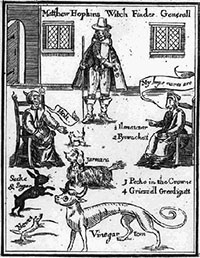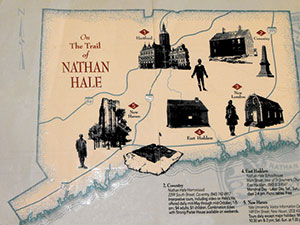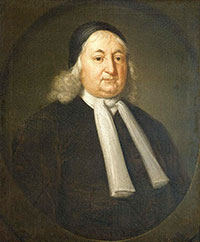 Eagle Feathers #289 – The Season of the Witch
Eagle Feathers #289 – The Season of the Witch
By Bob (Monty) Doherty
It was considered a time of year when both good spirits, evil spirits and ghosts flourished. Bonfires were lit. Masks were made. Jack-o-lanterns were carved out, and witches were said to have haunted the skies on brooms. Halloween, the last day of October and the day before the Christian holy day of All Saints Day had its origin in ancient Celtic lore. Most of these fables and myths never crossed the ocean, but unfortunately some took root here.
- On June 15, 1648, Margaret Jones of Charlestown was the first woman in Massachusetts to be executed for witchcraft. Governor John Winthrop and his son John Jr. of Ten Hills were on the court that tried, convicted, and ordered her execution. This took place 44 years before the Salem Witch trials. It has been said the Mystic River’s name originated from old women, like Margaret, whose only crime was gathering mystical and medicinal herbs along her shore for the sick. Some insecure, suspicious and religious minds accused them of being witches.
* *
*
- The same year of Margaret’s execution, Jane Walford, the wife of Thomas Walford, Somerville’s first European settler and a smith by trade, was accused of witchcraft. They lived in a stockade-surrounded, thatched home near today’s Dane Street for six years before the arrival of the Puritans in 1629. The Anglican Walfords defied Puritan authority until they reluctantly moved to Strawberry Bank in today’s Portsmouth, New Hampshire. Jane won the trials against her accusers in 1648, 1656 and 1669.
- Reverend John Hale was one of the most noted clergymen identified with the 1692 witch trials in Salem. He was born in Charlestown, educated at Harvard, ordained as the first minister of the First Parish Church in Beverly and died in Charlestown. As a twelve-year-old child, he witnessed the execution of Margaret Jones. Hale supported the trials deep into the Salem hysteria until accusations turned against his own wife. It is believed this event helped end the prosecutions.
* *
*
- John Hale’s great- grandson, Nathan Hale, was a Revolutionary War hero who trained on Winter Hill. Hanged by the British as a spy on September 22, 1776, his famous last words were: “I only regret that I have but one life to lose for my country.” The last hangings of the Salem trials coincidentally took place on September 22, 1692.
- Further down John’ s lineage is Edward Everett Hale, United States Senate Chaplin and the author of “The Man Without A Country.”
- In 1692 due to fear, intolerance and injustice, the Salem Witch trials took the lives of 25 innocent men, women and children. Out of nine judges, Samuel Sewall was the only one who publicly apologized. Somerville’s Sewall Street on Winter Hill is said to honor him … Lest We Forget!
*

 Eagle Feathers #289 – The Season of the Witch
Eagle Feathers #289 – The Season of the Witch *
* *
*
How beautiful is it to read such topics! I love history and even more love some historical facts and stories. Like for real you like hit me with this one, thank you! I love to read about some parlamentarians and about their intrigues hahaha. And for me it is always both fun and strange to read about some withes stuff of that time. How cool is that that we are an educated generation who does not believe in such weird things. When i read stuff like this i always think about The Twilight Saga and everything what was going on in the episode about burning witches. Brrr